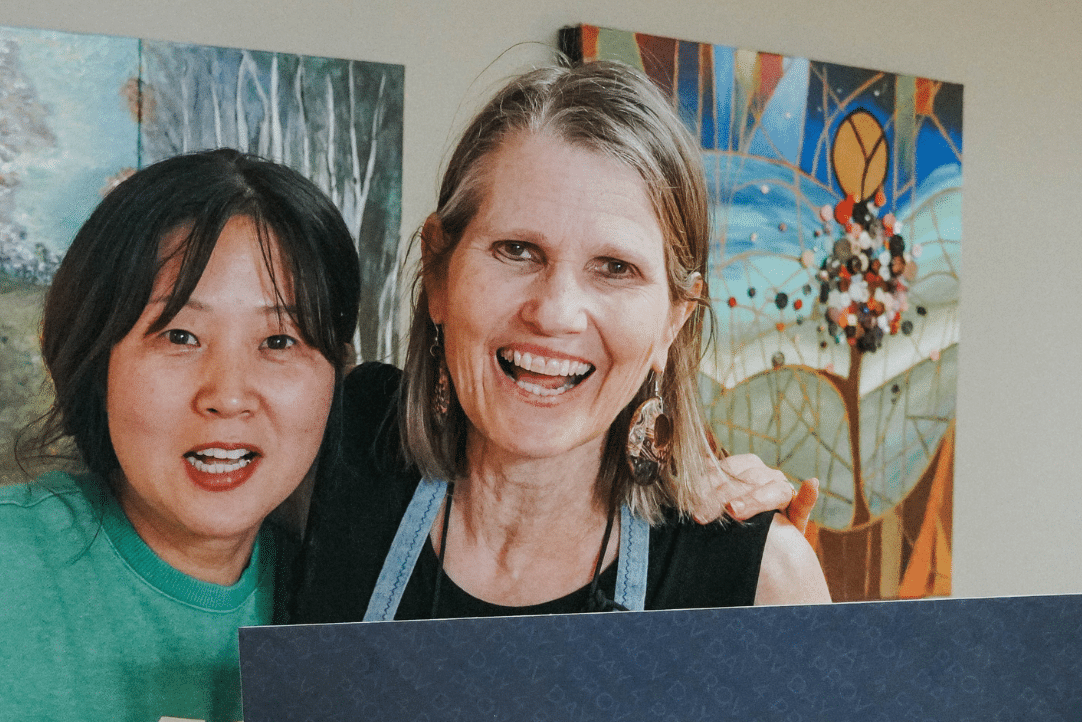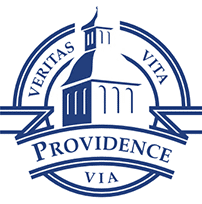An Interview with Elfrieda Lepp-Kaethler, Associate Professor of TESOL
In this Q&A, Elfrieda Lepp-Kaethler talks about the ‘Art Hive’ she started at Providence and this year’s special Lenten-themed series. We thought you’d enjoy reading this story as we draw closer to Good Friday and the Easter weekend.
Providence: Can you share what inspired you to start the ‘Drawing Into Lent’ series?
Elfrieda: Some of us from Protestant traditions are new to Lent. It seems to me our Catholic and Orthodox brothers and sisters have a head start on this Lent thing. Forty days of Lent seems like a good idea, but I’ve struggled to find a meaningful way to ‘enter into Lent.’ Since studying expressive arts, I have found myself, each year, engaging in expressive forms on Lenten themes like painting a rooster or a picture of Christ in the desert holding a scorpion.
This year, my colleague Christopher Lortie asked me if I would be willing to speak in chapel about my Lenten practices. My student Sun Chon Park and I had just restarted the Providence Art Hive drop-in (the first time in post-pandemic). In preparation for my sharing in chapel, I saw a serendipitous opportunity to outline a Lenten series as a structure for the weekly Art Hive.
Providence: How often did you meet? And how did you structure your meetings (i.e., themes and directives)?
Elfrieda: The Art Hive is a weekly drop-in where staff, faculty and students can come to engage in a variety of directives. The overall structure of the series was as follows:
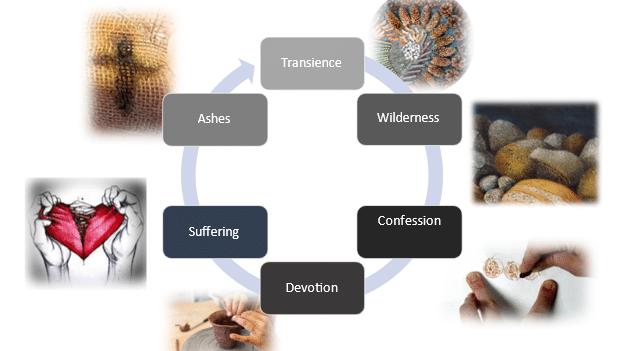
Each week, we focused on one theme. For each theme, we prepared four or five self-access stations with all materials and instructions. Participants were invited to engage in as many or as few directives as they chose. Shortly before the end of each session, participants were invited to share how the tasks connected with their lives.
Here are a few examples. We made things using ashes and charcoal to reflect on our mortality. We created indoor snow sculptures to ponder the fleeting nature of life. We created eco-art with materials that naturally decay. We painted a room-sized labyrinth on canvas. With clay, we made prayer beads and created ‘containers for perfume’ symbolic of our devotion to Christ.
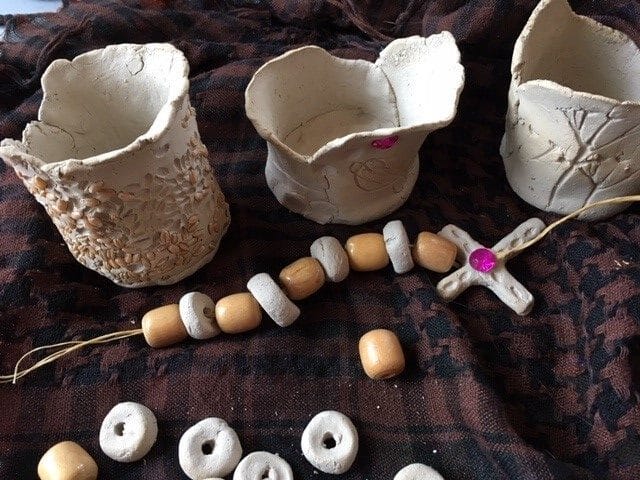
Prayer Beads and Bowls of Incense
Providence: Do you believe we can draw closer to God through the creative arts? Can it help us better reflect and focus on Jesus? If so, please explain.
Through the ages and across many cultures, Christians have entered into profound engagements with the Scriptures through works of art. The church father, John Chrysostom, encouraged Christians to think of their souls as paintings or pieces of sculpture. Art played an important role in the Early Church and in the Middle Ages in Europe. Stained-glass windows in cathedrals depicting biblical scenes were referred to as the ‘poor man’s Bible.’ In a day and age where few people could read and even fewer had personal copies of the Scriptures, many depended on the pictures on the walls and windows of the churches as a source of biblical input.
Through the reformation and the enlightenment, the rich tradition of the visual arts was lost to some extent, especially in the Protestant tradition. Faith became word-centered and intellectual. Obviously, words and intellect are important parts of our faith, but if we look closely, the Scriptures and church tradition show us ways to get ‘out of our heads’ and use our hands and bodies to enter into our faith.
In expressive arts, the main focus is on the process not the product, allowing the process to work on us where words and intellect fall short. For example, in the Old Testament, people expressed their sorrow by wearing sackcloth and putting ashes on their heads. In expressive arts terms, wearing sackcloth and ashes is a performative piece of art, expressing profound grief. Mary anointed Christ’s feet with perfume to express her devotion. And in Revelation, the prayers of the church are described as golden bowls full of incense (Rev 5:8).
These texts are invitations to enter into our faith through images, shapes, textures, colors, smells and rhythms. One of the goals of the Art Hive is to complement the university’s emphasis on rational and intellectual pursuit of knowledge by inviting visual and kinesthetic engagement with the Christian life.
Providence: What about Lent – these six weeks (40 days) on the church calendar leading up to Easter – is the most special to you?
Elfrieda: Every year a new element of Lent rises to the surface for me. This year, I have found it especially meaningful to reflect on the fleeting nature of life. My husband lost several close friends to COVID. I remember the day, early in the pandemic, when Italy lost 51 doctors in one day. These sudden unexpected deaths have given us pause. The eco-art directives where we created tributes to loved ones with materials that decay were helpful rituals to remember and to treasure the love that binds us beyond death.
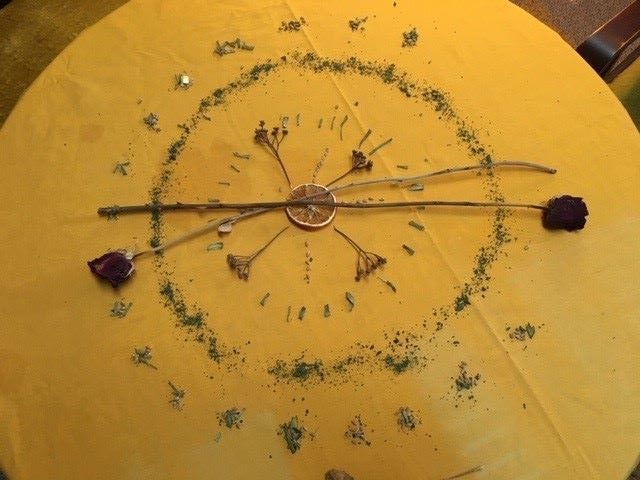
Fleeting Nature of Life in Honour of Elfrieda’s Mother
Providence: How do you traditionally observe (or keep) Good Friday?
Elfrieda: My father was a grain farmer in western Manitoba. Every year about a week before Good Friday, he would plant a box of wheat kernels and set it in the living room. I also do this every year. This year that practice became especially meaningful to me. My mother died last year. We buried her in the black soil in the cemetery close to Rivers where we grew up. The cemetery was donated to the church by my grandfather. Three generations of my family have been farmers on the surrounding land, each year dropping wheat kernels into the black earth and covering them up. Three generations of my family are buried on this cemetery.
This is Good Friday. Without fail, the wheat kernels that my father planted in the box would come up, green and alive by Easter Sunday. Some people find the Christian belief in resurrection hard to fathom. Oddly, generations of farmers have banked on it. Every year, millions of grain kernels are given burials. Every spring there are millions of resurrections.

